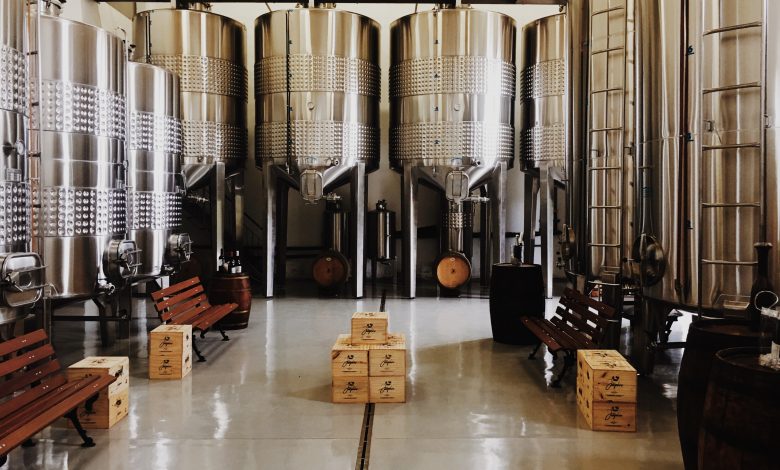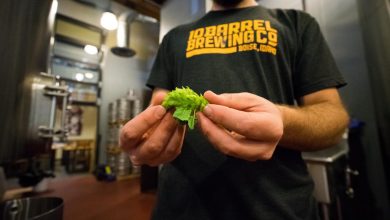What’s the Difference Between RIMS & HERMS for All-Grain Brewing?

RIMS and HERMS are puzzling acronyms homebrewing beginners might struggle with as they strive to produce beer domestically. Therefore, unraveling these two advanced homebrewing systems can help a newbie determine their choice of brewing technique between RIMS & HERMS.
The acronym RIMS stands for “Recirculating Infusion Mash System,” while HERMS means “Heat Exchange Recirculating Mash System.” These two significant methods of homebrewing beer are achievable under two categories: extract or all-grain.
Although extract and all-grain brewing use the same components (malt, yeast, and hops), all-grain brews require higher amounts of grains to achieve the level of sugar needed. On the other hand, extract brewing uses highly concentrated malt extracts to deliver the necessary sugar intensity.
Therefore, the contrast between the two lies in how sugar is derived from the brewing process. Professional beer makers have, over time, used all-grain brewing. Nowadays, homebrewers share in this privilege by using either the RIMS or HERMS. Both advanced homebrewing systems help to recirculate mash but in differing procedures. However, they share some similarities.
Both recirculating mash systems are great at maintaining a constant temperature during brewing. This characteristic is imperative to achieve a perfect beer flavor. Due to this consistency, homebrewers can make changes when trying to control the mash temperature from batch to batch until they attain a suitable mash temperature combination for the homebrew.
Furthermore, uniformity in temperature from batch to batch is very high with these two systems. Therefore, local brewers are unaffected by the surrounding temperature. Besides, the wort goes through the grain bed in both systems; thus, they generate pure wort and, ultimately, a clearer beer.

What Distinguishes RIMS & HERMS?
The primary distinction between RIMS when compared to the HERMS as a system lies in the method of heating the wort after it exits the mash-lauter tun (MLT).
In the case of RIMS, it requires straight heating for the wort to be released through a tiny pipe, where an electric heating component has been fixed. The wort is compressed out of this tube and heated to an adequate temperature before being recirculated into the MLT.
HERMS makes use of a hot liquor tank (HLT) that contains a coil with an outlet and inlet. The wort is heated in the HLT, and it passes through the mash-lauter tun (MLT) into the coil found in the HLT. And then, it goes back into the MLT. The wort warms up during this recirculation.
Pros of the RIMS
The following are reasons why a local brewer would choose RIMS:
Heats Swiftly
One of the RIMS selling points is its tendency to boil wort faster than its counterpart system as a result of its smaller setup. A HERM system would likely give room to heat about 12 gallons of hot liquor tank (HLT) brewing water at a go. On the contrary, the RIMS may only allow one gallon of brewing water at a time.
Clearer Wort
The process employed by the RIMS to prepare the brew aids the clarity of wort due to the consistently recycling the mash.
Temperature Control
RIMS affords homebrewers the capacity to maintain and control the mash temperature at any point in time.
It Aids Consistency
Mastering the usage of the RIMS allows a consistent brewing method due to easy control over the mash temperature.

Cons of the RIMS
Possibility of Searing the Mash Water
The nightmare of every local brewer would be having a batch of brew contaminated or ruined in the process of making it. Opting for the RIMS technique, therefore, demands a high level of care and attention given the risk of searing the wort if the pump discontinues from running while heating takes place.
It’s best to avoid the high watt density heating elements and make sure that mash water is running through the pump before putting on the heating element.
RIMS Is Costlier
Spending money on a system that’s infamous for its high scorching risk just to prepare local beer, not even a craft beer, isn’t a particularly attractive venture. In other words, you’d need to incur additional costs to purchase the necessary elements that’ll help avoid the disheartening incidence of polluting or ruining an entire batch of brew.
Complex for a Beginner
Novice brewers might have to stay off the RIMS for a while due to its complexity. Operating and assembling the many parts of the RIMS can be strenuous for a brewer who isn’t yet acquainted with the act. Therefore, it’s advisable, to begin with, the less complicated systems, such as the basic cooler kit and grainfather systems.
Cleaning Is Difficult
The many assembled parts of the RIMS makes giving it a good clean near impossible. The complicated assemblage, thus, poses the threat of scorching, as accumulated dirt can cause contamination.
Calls for More Attention
RIMS aren’t just set up and abandoned. There’s an unavoidable need to regularly check on the pump to prevent the wort from extreme heating. If a local brewer can’t give the necessary attention to ensure the smooth running of the entire brewing process, it’s advisable to consider the HERMS as a more suitable choice.
Pros of the HERMS
It Is Cheaper
HERMS is a prudent method of brewing domestically. It is relatively more affordable than the RIMS. Homebrewers do not have to go the extra mile of investing so much in purchasing equipment to set this system up, as it does not require additional components.
Easy to Operate
The system is simple and does not pose any complexity. Setting it up is easy and less technical. This brewing technique does not subject its user to a series of caveats.
Easy to Clean
After getting your wort ready for consumption, you can still make more gallons of unscathed brew. Besides, tidying up won’t be such a difficult task.
It Does Not Sear Wort
Searing your wort means scorching it. Hence, give it up to the HERMS, for it allows homebrewers to prepare their wort without burning it. That’s because, unlike RIMS, the wort is heated indirectly in the hot liquor tank (HLT).
Easy Temperature Control
As mentioned earlier, ease of temperature control is a shared attribute between the two advanced systems. In HERMS, you can achieve this by simply adjusting the heat and the speed of the pump through which the wort passes.
Allows Gentle Heating
Based on the previous point, gentle heating is achievable. Therefore, grain fragments do not stand the risk of being excessively hot, thereby preserving the perfect flavor of the mashes.
Cons of the HERMS
It’s Time-Consuming
It takes a lot of time before a homebrewer gets the specific temperature they desire.
Setup Is Large
The HERMS takes up lots of valuable space due to the large equipment that makes up its parts.
A Brew Sculpture
Brew sculptures are the built-up units or parts that grip the brewing containers and sustain the entire accessories used on the systems. Sculptures facilitate brewing processes for a homebrewer. When it comes to RIMS and HERMS, there are three types of brew sculptures:
- Three-tier RIMS-HERMS brew scripture
- Two-tier RIMS-HERMS brew sculpture
- Single-tier RIMS-HERMS brew sculpture

Three-Tier RIMS-HERMS Brew Sculpture
The three-tier uses gravitation to convey fluids to the three containers in the system, thereby substituting the pump. The advantage of this brewing method lies in its usability, even without electricity. The stainless containers are hoisted at varying heights to easily enable wort and water flow to the next drum as brewing goes on.
Two-Tier RIMS-HERMS Brew Sculpture
It has two containers beside the other, while the third goes beneath or on top of the others. Liquids are conveyed by gravity in one of the drums. However, others use a pump.
The Single-Tier Brew Sculpture
This sculpture is the most common of them all. It comprises three stainless containers possessing uniform height, which is usually short. This allows the brewer to keep an eye on the activities taking place in the vessels. Also, for this sculpture type, a ladder isn’t needed for mixing. The risk factor of this sculpture type, when compared to its counterparts, is minimal because no container is positioned above the head of the homebrewer.
From this comprehensive analysis of the RIMS and HERMS, you can finally decide on the brewing system that’ll suitably make your beer using any of the three brew sculptures to set up. You’re well on your way to enjoying a fresh-tasting local brew.



